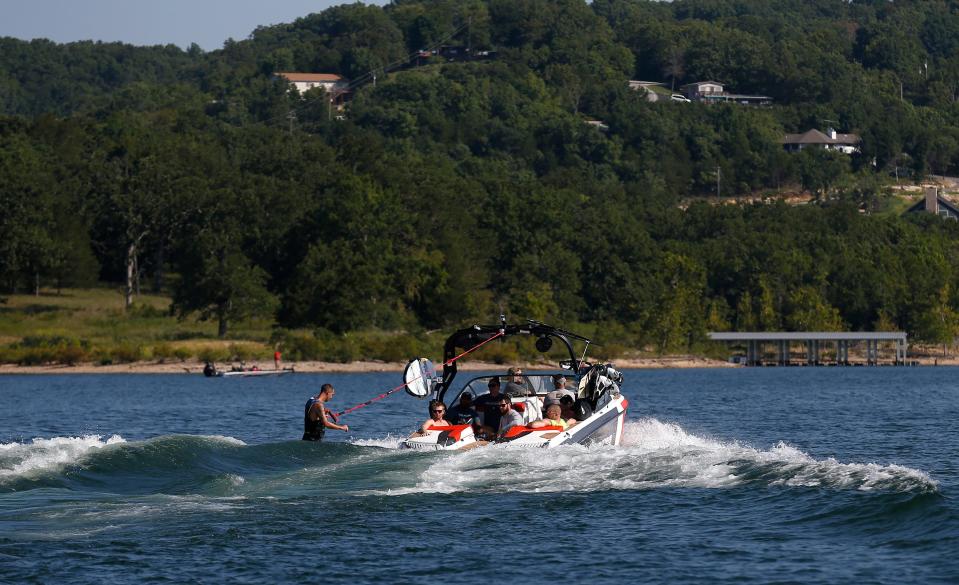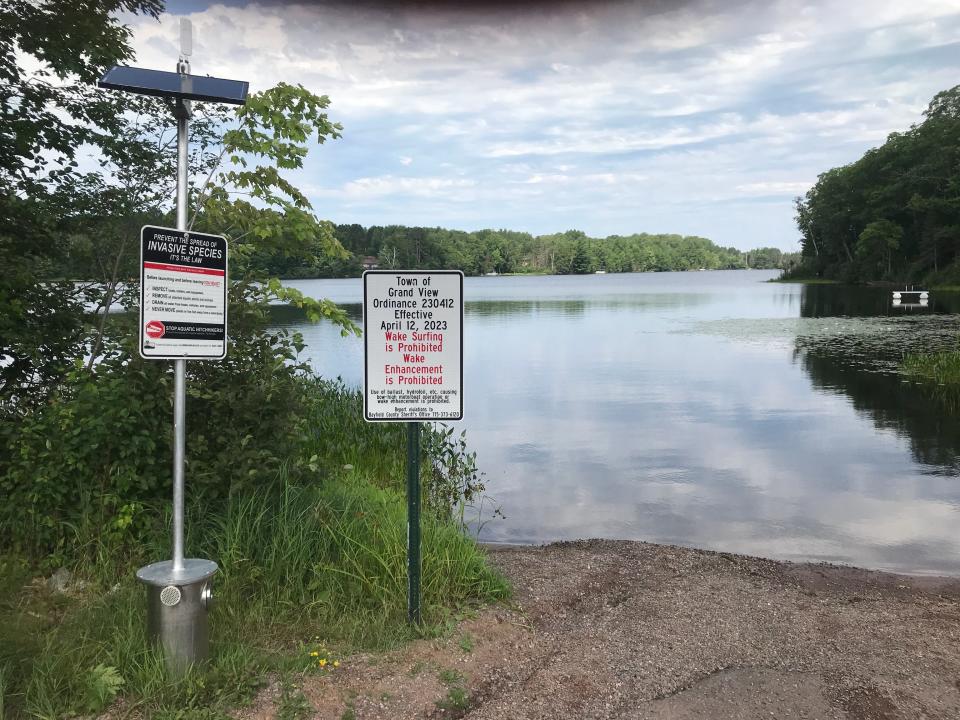Concerned for lakes, Wisconsin residents again urge Natural Resources Board to ban wake surf boats
Wisconsin residents used a public testimony period at Wednesday's Natural Resources Board meeting in Manitowish Waters to once more press state officials for action on wake surfing.
Wake surf boats are power craft with special ballast tanks designed to increase their displacement and create larger than normal waves for surfing or tubing. Several thousand pounds of lake water are commonly taken into the tanks to increase the wake.
Use of the boats on Wisconsin waters has increased markedly in recent years, according to Darren Kuhn, DNR boating law administrator.
With more wake surfing has come more conflicts with other recreational users and a growing awareness of the ecological damage caused by the powerful boats, said Jeff Meessmann of Presque Isle.
Meessmann said wake surf boats can produce wakes between 3 and 4.5 feet high.
"Wake surf boats generate waves far more powerful than the greatest natural wind-driven waves on typical Wisconsin lakes," Meessmann said. "The problem is the wakes create a safety hazard to everyone else using the lake, damage the environment, destroy personal property and erode the shoreline."
In addition, Meessmann referenced a common theme of those who testified Wednesday: the design of wake surf boat ballast tanks doesn't allow them to be completely emptied or inspected and therefore violates state rules designed to prevent transfer of diseases and invasive species between lakes.

Citizens ask for emergency rule to ban wake surf boats
Meessmann urged the NRB and Department of Natural Resources to take a similar action to its 2007 emergency rule to prevent the spread of viral hemorrhagic septicemia among fish. The rule made it a violation to transfer water, even in bait buckets or live wells, from one lake to another.
"To that end I am requesting that the NRB issue another emergency order that would prohibit the use of wake boat ballast systems on Wisconsin's lakes and rivers," Meessmann said. "You have the power to protect our lakes from AIS (aquatic invasive species) and VHS infestation."
Wisconsin regulations state all boat ballast systems must be completely emptied before being removed from a boat landing.
But wake boat ballast systems are not compliant, said Carol Phillips of Presque Isle.
As proof, she presented a wake boat manufacturer's diagram of its ballast tank design.
"There is no way to know if there are invasive species like zebra mussels and spiny waterfleas, or bits of invasive plants in the residual water," Phillips said.
Although the amount of water remaining in the ballast tanks would vary between boats and manufacturers, none are designed to be fully drained, she said.
But Phillips said it's known the remaining volume of water is substantial because manufacturers require gallons of antifreeze be added to the ballast systems in the winter to prevent that residual water from freezing and causing damage.
A manual from boat manufacturer MasterCraft, for example, recommends owners add two gallons of antifreeze to each of the multiple ballast tanks in winter.
Phillips asked the NRB and DNR to modify administrative rule NR 19.055 to clarify that if a boat has a ballast system and there is no practical means for inspecting that system, it shall be presumed to contain residual lake water, and that ballast system cannot be filled or emptied in Wisconsin lakes and rivers.
Joe Garstecki, who lives on Little Cedar Lake in West Bend, asked the NRB and DNR to look at the impact of wake surfing on small and medium-sized Wisconsin lakes.
"Not only are these boats disruptive and potentially dangerous to other lake users, but evidence is mounting that these wake boats are also creating ecological damage," Garstecki said.

Residents say problem with wake surf boats needs a statewide solution
While about a dozen municipalities have enacted local ordinances restricting or prohibiting wake surfing, Garstecki said wake surfing has become a significant statewide issue that demands a statewide solution.
"The thousands of lakes around the state cannot attempt to resolve this issue on a lake-by-lake basis," Garstecki said. "Every day all around Wisconsin lakes friends will be arguing with friends, neighbors will be shouting at neighbors, and lake residents will be quarreling with their local resource districts, sanitary districts and homeowner associations. Why? Disagreements on wake boat use."
State residents have come before the NRB several times in the last two years to express concerns about wake surfing, including in December.
But so far neither the NRB or DNR has taken action on the issue.
The lack of action has been frustrating, Phillips said.
"(The state requires) fishermen to empty water from their live wells containing fish," Phillips said. "But a wake boat, likely containing many gallons of water, can't be inspected, so they get a free pass, despite being far more likely to spread invasives than any other boat at the landing."
"Our pristine lakes are the backbone of our economy here in the beautiful Northwoods," Phillips added. "It's time to take action to protect them and other state lakes from problems associated with wake surfing."
More: Smith: Milwaukee River sturgeon restoration advances on shoulders of Riveredge volunteers
This article originally appeared on Milwaukee Journal Sentinel: Concerns over wake surfing again presented to Natural Resources Board

